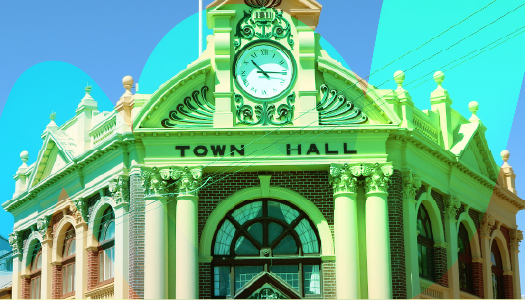How to avoid delivery risks in your next capital works program
Community members may not often think about it, but the everyday services their local government provides rely on the smooth workings of an extensive range of diverse assets – roads, bridges, drains, footpaths, buildings and sometimes larger operations like airports and landfills.
Tracking, managing and delivering asset maintenance, replacement work or new capital works programs can be highly complex, particularly when asset managers have multiple projects on the boil.
According to recent data, it’s an area local government could be doing a lot better at. The world's leading association for project professionals and changemakers, the Project Management Institute revealed in its annual Pulse of the Profession report that just 39% succeed – meaning they’re delivered on time, on budget and with all required features and functions. Meanwhile, almost one in five projects fail because they are either cancelled before completion or never used.
Lapses in project management can be expensive business. On average, organisations are losing $109 million for every billion dollars spent on projects around the world.
Issues such as budget blowouts, missed deadlines and scope creep can be all put down to failings in one or more of three areas:
- The people – The project may be led by an inexperienced project manager, there may be too few resources, a lack of momentum within the team or a lack of sponsor support.
- The process – Changing priorities can easily derail projects, while not understanding the communities needs or undefined project goals can impact the project’s return on investment.
- The tools – Having data stored across multiple disparate systems results in more manual manipulation of data which can drive inconsistency, impacting decision making.
On the flip side, gaining better visibility and control of your projects before, during and after implementation presents a significant opportunity for asset managers to make more informed decisions, optimise return on investment and stretch budgets further.
So, what does good project delivery look like?
Here are eight tips for improving your next capital works program and avoiding the risks of failure:
1) Get a portfolio-level view of your initiatives and risk profile
Planning upfront across your asset portfolio is invaluable in avoiding downstream costs. Avoid the daily firefight by looking at your risks from a high-level portfolio view so you can prioritise which issues to focus on.
2) Create a single source of truth
When managing a portfolio of assets or multiple capital works projects, you need to have all your project data in one place to ensure there is no ambiguity. This allows you to see at a glance the different stages of each project lifecycle, the project status, whether projects are tracking to budget and if there is any slippage in deliverables. Some platforms also offer real-time and automated reporting for more efficient regulatory compliance, valuations and accounting.
3) Put governance in place at the portfolio level
Understand how many projects are at each lifecycle stage and put controls in place to help justify moving a particular project forward to the next stage, such as those that with a higher return on investment to the community.
4) Focus on onboarding, training & development of delivery teams
A bit of tribal knowledge goes a long way in understanding the best way to navigate a project. To get that knowledge base, collect data from projects already delivered – both successful and unsuccessfully – so delivery teams can be trained on what works and what doesn’t for your organisation.
5) Identify project risks upfront
A lot of the time with council projects, we see that issues appear without there being any associated risk. It’s important to identify risks upfront so that if they occur, you can move them through a simple predetermined process. Also, implement change control measures so that any variance to timeframes, resourcing or cost can be weighed up.
6) Automate the collection and management of information
Quite often, project information is spread across different folders, software platforms and email which takes considerable time for project managers to consolidate, and sometimes human error gets in the way. A better solution is to pull the data into a single project repository – including photos and attachments – so you can have confidence that you have an accurate, up-to-date view of all projects.
7) Tell the story to stakeholders visually
Keep stakeholders up to date by presenting your data visually via dashboards. It helps you serve up your data quickly so that stakeholders can quickly and easily understand cost, time and resourcing, making it easier to monitor each lifecycle stage.
8) Create a drumbeat and build momentum
When you deliver a project with momentum, people come along with you on the journey. Relationships are easier to maintain. And, as a team, you can run faster. At the start of your project, identify your stakeholders and commit to communicating your activities, progress, key metrics and issues on a regular basis.
It is up to local governments to provide their communities with the right infrastructure, in the right places, at the right time. With better project management, local governments have the potential to save millions each year, while delivering the quality services their communities deserve.
About the author
Adrian Tyler is the CEO at FocusHQ. Adrian has over 20 years of experience in leading enterprise-wide business transition projects and programs, establishing and running PMOs, and consulting to organisations around the world, with a long-term focus on public sector clients. Adrian also serves as the Past President of the Board of Directors for the Queensland chapter of the Project Management Institute and was a graduate of the Project Management Institute’s Global Leadership Institute Master Class.



